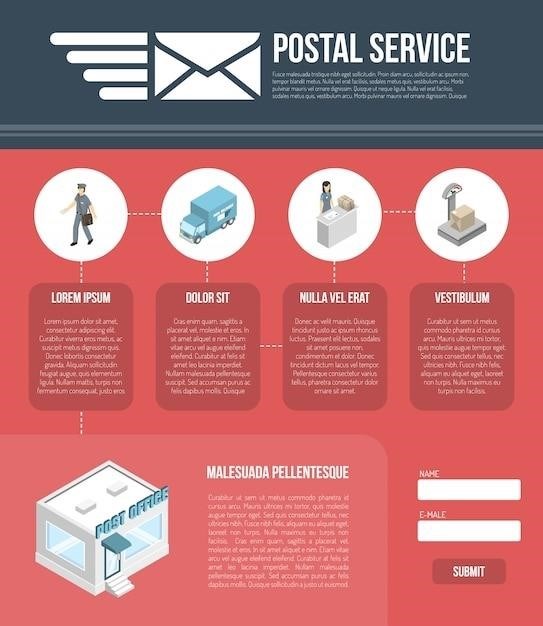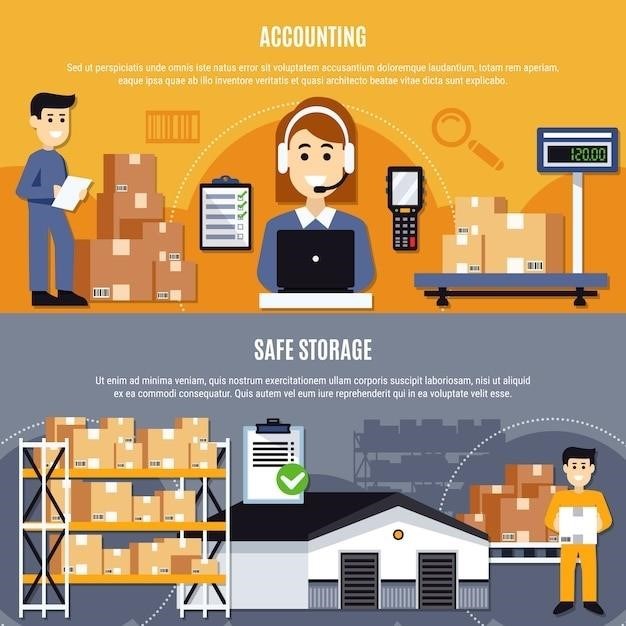self storage unit size guide
- Published
- in United Kingdom
Self Storage Unit Size Guide⁚ Choosing the Right Fit for Your Needs
Choosing the right self storage unit size is crucial for ensuring your belongings are safely stored and easily accessible. This guide provides a comprehensive overview of storage unit sizes‚ factors to consider‚ and tips for selecting the perfect fit for your needs.
Introduction
Self storage has become increasingly popular as a convenient solution for individuals and businesses facing space constraints. Whether you’re moving‚ decluttering‚ or simply need a place to store seasonal items‚ self storage provides a secure and accessible option. However‚ navigating the world of storage unit sizes can be overwhelming. With a wide range of options available‚ choosing the right size for your needs is essential to ensure a smooth and cost-effective storage experience. This guide will delve into the intricacies of storage unit sizes‚ providing valuable insights and practical tips to help you make an informed decision.
Understanding Storage Unit Sizes
Self storage units are typically measured in square feet‚ with the most common sizes ranging from 5×5 feet (25 square feet) to 10×30 feet (300 square feet). The size of a storage unit is often described using its dimensions‚ such as a “5×10 unit” or a “10×20 unit.” A 5×10 unit is equivalent to a small walk-in closet‚ while a 10×20 unit is comparable to a small bedroom. Larger units‚ like a 10×30‚ can accommodate the contents of a two-bedroom apartment or even a small car. Understanding the different sizes and their corresponding storage capacity is crucial for making the right choice for your needs.
Common Storage Unit Sizes
Self storage facilities offer a range of unit sizes to cater to diverse storage needs. Here’s a breakdown of the most common storage unit sizes⁚
- Small Storage Units (5×5 to 5×10)⁚ Ideal for storing a few boxes‚ seasonal decorations‚ or small furniture. Comparable to a small closet;
- Medium Storage Units (10×10 to 10×15)⁚ Suitable for storing the contents of a single room‚ such as furniture‚ appliances‚ or boxes. Similar in size to a standard bedroom.
- Large Storage Units (10×20 to 10×30)⁚ Offer ample space for storing the contents of a multi-room home‚ vehicles‚ or large items like boats or RVs. Comparable to a garage or a small apartment;
Remember‚ the actual dimensions of a storage unit can vary slightly from facility to facility. It’s essential to check with the storage facility for precise measurements and to ensure the unit you choose will adequately fit your belongings.
Small Storage Units
Small storage units‚ typically ranging from 5×5 to 5×10 feet‚ are perfect for storing a limited number of items. They’re ideal for those seeking a compact space for seasonal decorations‚ sports equipment‚ personal belongings‚ or a few boxes. Think of them as a small closet or a single-person dorm room. These units are often the most affordable option‚ making them a great choice for short-term storage needs or for storing items that don’t require a lot of space.
Here are some examples of what can fit in a small storage unit⁚
- A few boxes of clothing or books
- Seasonal decorations like Christmas ornaments or Halloween costumes
- Small furniture pieces like a chair or a coffee table
- Sports equipment like golf clubs or bicycles
If you’re unsure whether a small unit will suffice‚ it’s always best to err on the side of caution and opt for a slightly larger unit to ensure you have enough space.
Medium Storage Units
Medium storage units‚ typically measuring 10×10 to 10×15 feet‚ offer a good balance between space and affordability. These units are often a popular choice for individuals and families who need to store a larger quantity of items‚ such as furniture‚ appliances‚ or the belongings from a single room. They are also suitable for storing seasonal items or for those who need extra space during a home renovation or move.
Think of a medium storage unit as being roughly the size of a spare bedroom or a small garage. Here are some examples of what can fit in a medium storage unit⁚
- The contents of a single bedroom‚ including furniture and boxes
- A small collection of furniture‚ such as a sofa‚ a dining table‚ and chairs
- A refrigerator‚ a washer‚ or a dryer
- A collection of seasonal items‚ like winter clothing or summer furniture
If you need to store a larger number of boxes or a significant amount of furniture‚ a medium storage unit might be the right size for your needs.
Large Storage Units
Large storage units‚ typically ranging from 10×20 to 10×30 feet‚ offer ample space for storing substantial quantities of belongings or even vehicles. These units are ideal for families with a lot of furniture‚ those moving homes‚ or anyone needing to store bulky items like motorcycles‚ boats‚ or cars. Large units can accommodate the contents of an entire house or apartment‚ providing a convenient solution for long-term storage or temporary storage during a move or renovation.
Imagine a large storage unit as being the size of a two-car garage or a small apartment. Here are some examples of what can fit in a large storage unit⁚
- The contents of a two-bedroom apartment‚ including furniture‚ appliances‚ and boxes
- A large collection of furniture‚ including multiple sofas‚ tables‚ and chairs
- A full-size truck or SUV
- A boat or a small RV
If you need to store a significant number of belongings or have large items that require ample space‚ a large storage unit might be the best option for you.
Factors to Consider When Choosing a Storage Unit Size
Choosing the right storage unit size is crucial to ensure your belongings are safely stored and easily accessible. Several factors influence the appropriate unit size‚ and considering these carefully helps you avoid renting a unit that’s too big or too small.
Here are the key factors to consider⁚
- The amount of items you need to store⁚ Carefully assess the volume of belongings you need to store. Make an inventory list of furniture‚ boxes‚ and other items.
- The size of your items⁚ Consider the dimensions of your belongings. If you have large items like furniture‚ appliances‚ or vehicles‚ you’ll need a larger unit.
- Your budget⁚ Storage unit costs vary based on size and location. Determine your budget and choose a unit that fits your financial constraints.
- The length of time you need storage⁚ If you plan on storing items for a long time‚ a larger unit might be more cost-effective in the long run. For short-term storage‚ a smaller unit might suffice.
By considering these factors‚ you can choose the optimal storage unit size that balances your needs‚ budget‚ and storage duration.
The Amount of Items You Need to Store
The first step in determining the right storage unit size is assessing the amount of items you need to store. This involves a thorough inventory of your belongings‚ which can be done in a few ways. You can start by physically walking through your home or garage‚ taking note of every item you intend to store. Create a list‚ categorizing items into groups like furniture‚ boxes‚ appliances‚ and seasonal decorations.
Alternatively‚ you can use a visual inventory tool like a smartphone app or a simple spreadsheet. As you inventory your belongings‚ consider the quantity of each item. For example‚ instead of simply listing “boxes‚” note the approximate number of boxes you plan to store. This detailed inventory will provide a clear picture of the storage space you’ll need.
The Size of Your Items
Once you have a good understanding of the amount of items you need to store‚ it’s time to consider their size. Large items like furniture‚ appliances‚ and sporting equipment will require more space than smaller items like boxes‚ clothing‚ and books. Take accurate measurements of your largest items‚ including their height‚ width‚ and depth. Note down the dimensions of any oddly shaped items‚ such as furniture with unusual angles or appliances with protruding parts.
It’s also helpful to consider the overall volume of your belongings. If you have a lot of bulky items‚ you’ll need a larger unit‚ even if you have a relatively small number of items. For example‚ a few large pieces of furniture might require more space than many boxes of smaller items.
Your Budget
Your budget is a significant factor when choosing a storage unit size. Storage unit prices vary depending on size‚ location‚ and amenities. While it’s tempting to opt for the smallest unit possible to save money‚ it’s important to factor in the long-term cost. Choosing a unit that’s too small might lead to needing to upgrade later‚ resulting in additional expenses. Consider the total cost of storage over the duration you need it‚ including monthly rent‚ insurance‚ and potential fees for access or climate control.
Compare prices from different storage facilities in your area and consider the value for money each offers. Some facilities might have introductory offers or discounts for longer-term rentals. Remember‚ getting the right size unit from the start can save you money in the long run.
The Length of Time You Need Storage
The duration of your storage needs directly impacts the size unit you choose. Short-term storage‚ like during a move or home renovation‚ often requires less space than long-term storage. For instance‚ if you’re moving and plan to store your belongings for a few months‚ a smaller unit might suffice. However‚ if you plan to store items long-term‚ like seasonal decorations or heirlooms‚ a larger unit might be more practical.
Some storage facilities offer discounts for longer-term rentals‚ while others may have minimum rental periods. Consider the overall cost of storage over time‚ including potential increases in rent. It’s best to choose a unit that comfortably accommodates your needs and avoids the inconvenience of needing to upgrade or move your belongings later.
Tips for Choosing the Right Storage Unit Size
To ensure you select the ideal storage unit size‚ follow these helpful tips⁚
- Measure your items⁚ Before visiting a storage facility‚ measure all the items you plan to store. This includes furniture‚ boxes‚ appliances‚ and any other belongings.
- Create an inventory list⁚ A detailed inventory list can help you visualize the space you’ll need. Categorize your items by size and importance‚ making it easier to assess the necessary storage capacity.
Measure Your Items
Accurately measuring your belongings is the first step to selecting the right storage unit size. Use a standard tape measure‚ yardstick‚ or even your phone’s measuring app to determine the dimensions of your furniture‚ boxes‚ appliances‚ and other items.
Don’t forget to consider the height of your items‚ as some storage units have limited vertical space. If you’re storing large‚ bulky items like furniture‚ consider measuring the width‚ depth‚ and height to get a complete picture of the space they’ll occupy.
Take notes of the measurements and keep them organized for easy reference when comparing storage unit sizes. This will ensure you choose a unit that comfortably accommodates all your belongings.
Create an Inventory List
Once you’ve measured your items‚ create a detailed inventory list to help you visualize how much storage space you’ll need.
List every item you plan to store‚ including furniture‚ appliances‚ boxes‚ and personal belongings.
Categorize your items by size and type‚ such as “small boxes‚” “large furniture‚” or “seasonal decorations.” This will help you estimate the storage space required for each category and make sure you’re not overestimating or underestimating your needs.
An inventory list will also help you stay organized and easily identify your belongings when you need to access them later.
Use Online Storage Unit Size Calculators

Many self storage facilities and websites offer online storage unit size calculators. These helpful tools can provide a more accurate estimate of the storage space you’ll need.
Simply input the dimensions of your belongings‚ such as the length‚ width‚ and height of furniture or the number of boxes you plan to store.
The calculator will then estimate the required storage unit size based on your input.
These calculators can be a valuable resource for determining the appropriate storage unit size‚ especially when dealing with numerous items or complex storage needs.
Visit the Storage Facility in Person
While online tools and measurements can be helpful‚ it’s always best to visit the storage facility in person before making a final decision. This allows you to get a firsthand look at the units and assess their size and layout.
Take a tape measure with you and measure the actual dimensions of the units you’re considering.
You can also visualize how your belongings would fit into the space and ensure it meets your specific requirements.
Visiting the facility also provides an opportunity to speak with staff‚ ask questions about security‚ access hours‚ and any other concerns you may have.

Choosing the right self storage unit size is essential for a successful and stress-free storage experience. By considering the factors discussed‚ such as the amount and size of your belongings‚ your budget‚ and the length of time you need storage‚ you can make an informed decision that aligns with your specific needs.
Remember to measure your items‚ create an inventory list‚ utilize online size calculators‚ and visit the storage facility in person. By taking these steps‚ you can ensure that you select a storage unit that provides ample space‚ is within your budget‚ and meets your overall storage requirements.
